A Beginner’s Guide to Gated Content with Examples & Best Practices
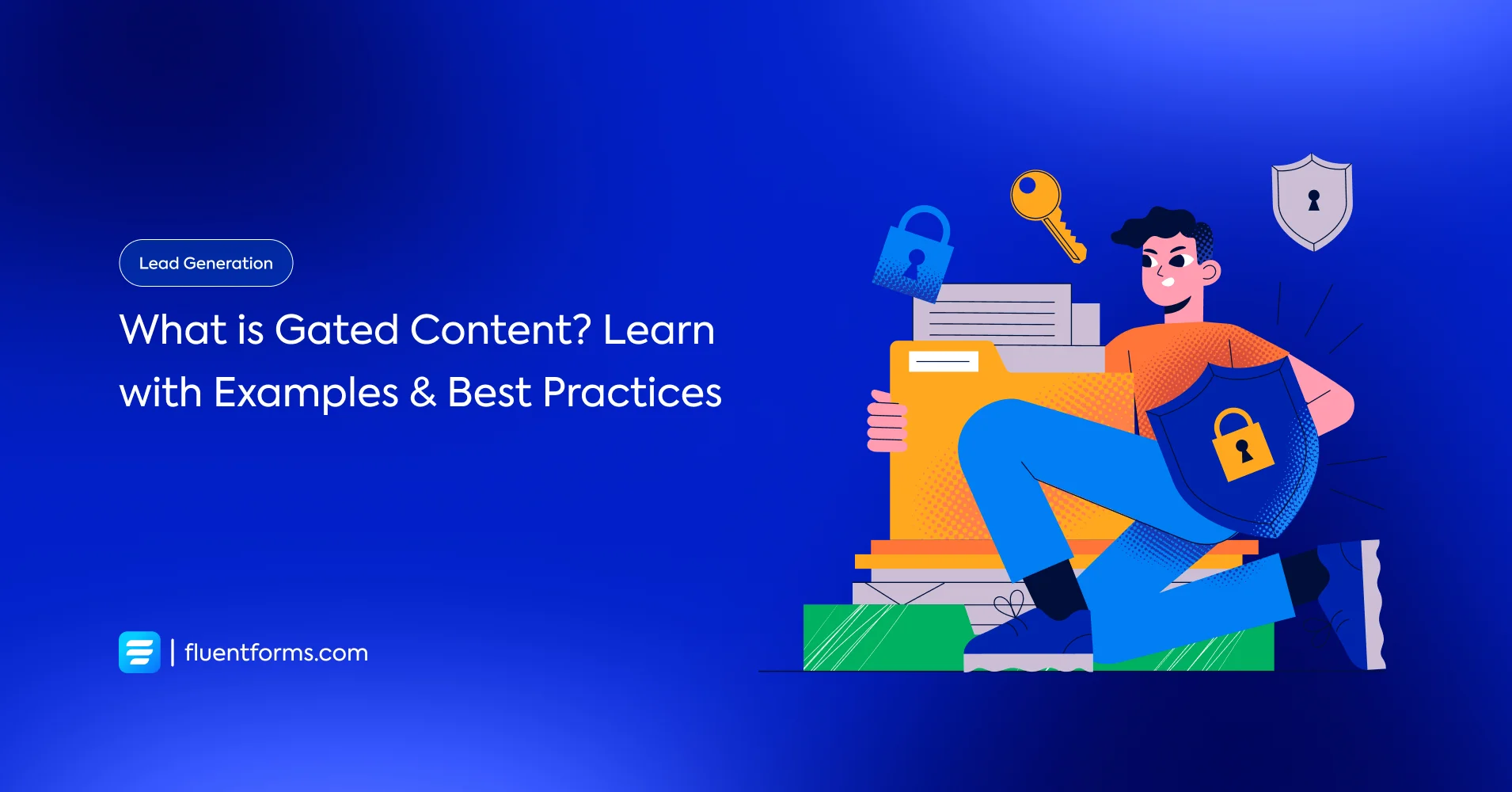
Ever wonder how you have to pay a toll to pass through the road with the better view? They even have a toll gate, an automated system (ERP), and security measures for that purpose.
You provide what’s asked of you at the gate and in exchange you get to pass through to your destination.
Gated content is similar. Here you offer the beautiful road (valuable resources/materials) in exchange for something your business needs (subscriptions/lead information/sign-up, etc)
It’s a process that benefits both you and your visitors visibly.
However, to rip the benefits you have to plan strategically. For example, knowing the right time to start offering gated content, how to utilize them to generate more qualified leads, what type of gated content is appropriate at what stage of the buyer’s journey, etc.
Let’s start with a simple explanation and move right to the strategies.
What is gated content
Gated content refers to any online material that requires visitors to take required action (usually provide their contact information through a form) for access.
More examples of those requirements might be submitting an email address, filling out a form, providing geo-location, signing up, reacting to or sharing a post, inviting people to communities, etc.
Typically, when someone clicks the button to access gated content, they’re taken to a landing page. The landing page often contains a lead collection form or a step-by-step guide where users can take the desired action by clicking a few buttons.
When the user succeeds in taking the right action, they get to access the desired gated resource.
You should select resources very carefully to offer as gated content. These must be your high-value materials and should be worth the trouble your users go through. Examples of gated content include free trials, e-books, webinars, original research, etc.
The gate of the gated content acts as a trade, allowing you to collect valuable lead data in return for valuable resources.
Gated content vs. ungated content
To learn the unique benefits of gated content for your business, you must first understand in which aspects it differs from its alternative, ungated content.
The main difference between gated and ungated content is that users need to complete an action to access gated content, while ungated content has no precondition.
Therefore, ungated content attracts many more leads than gated content. However, those leads aren’t as qualified as the ones you capture through gated content.
The main purpose of ungated content is to improve site SEO and increase brand awareness, whereas gated content aims to generate and segment leads you can nurture over time.
In terms of user-friendliness, ungated content stays ahead of gated content since it doesn’t require any action from the visitors.
To sum up, you need both types of content so you don’t fall behind in any aspect.
Create, post, and update ungated content consistently for brand awareness, and drive traffic to your site. Add some really valuable gated content to generate and nurture qualified leads.
Analyze the performance of your content and optimize further with time.
Pros & cons of gating your content
Let’s check out the pros and cons of gated content so you can decide for yourself if gating content is in your best interest or aligns with your current goals.
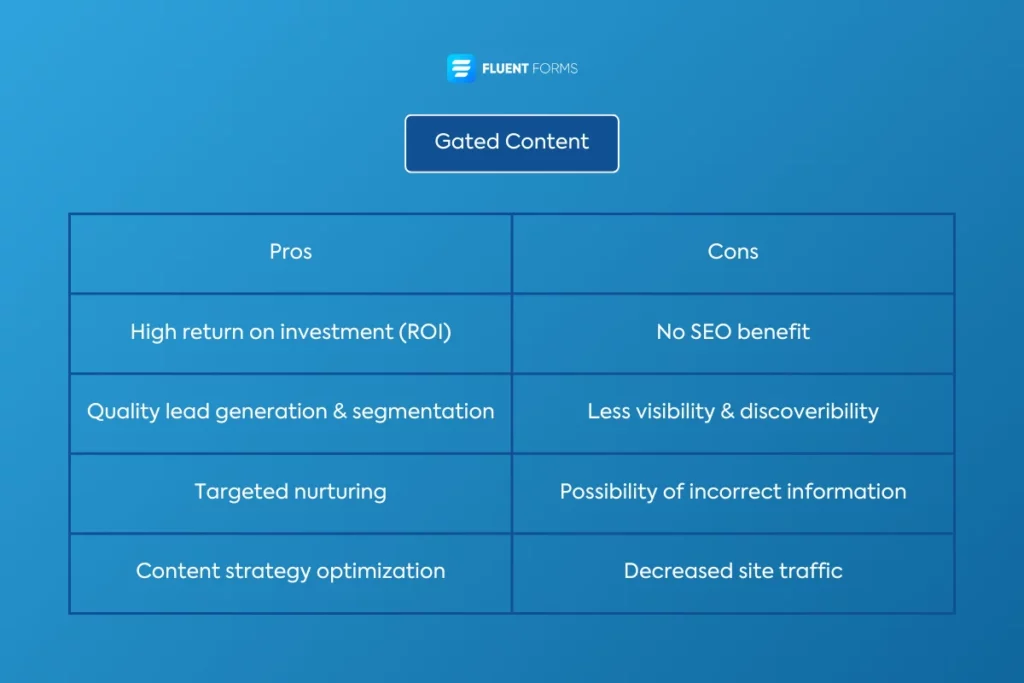
Pros
With the right planning, creating gated content won’t cost you much, bringing a high return on investment (ROI).
Gated content helps you single out quality leads because people would only share information with you when they trust you and deem your offering valuable. These quality leads, in turn, boost your sales.
Offering various types of gated content allows you to segment your leads based on the content they download/access. After segmenting, you can nurture them through targeted emails with tailored content.
It also helps you to optimize your content strategy by analyzing what type of content generates the most leads.
Cons
Gated content lowers visibility since only a portion of visitors provide their information to view the content. This may result in fewer page views and traffic.
It also doesn’t improve SEO or Answer Engine Optimization (AEO). This means you can’t rely on gated content for your site’s discoverability.
If visitors submit incorrect information, it will be a waste of your time, storage, and effort.
Now that you know the pros and cons of gating content, let’s see when is the right time to offer them so you can strategize.
How to create gated content
Gating content is super easy. You can choose a tool or a plugin to gate your content, or you can do it yourself using Fluent Forms, the fastest WordPress form builder. Here’s how:
Step 1
Go to Fluent Forms from your dashboard and click New Form. Choose a template or create a form from scratch.
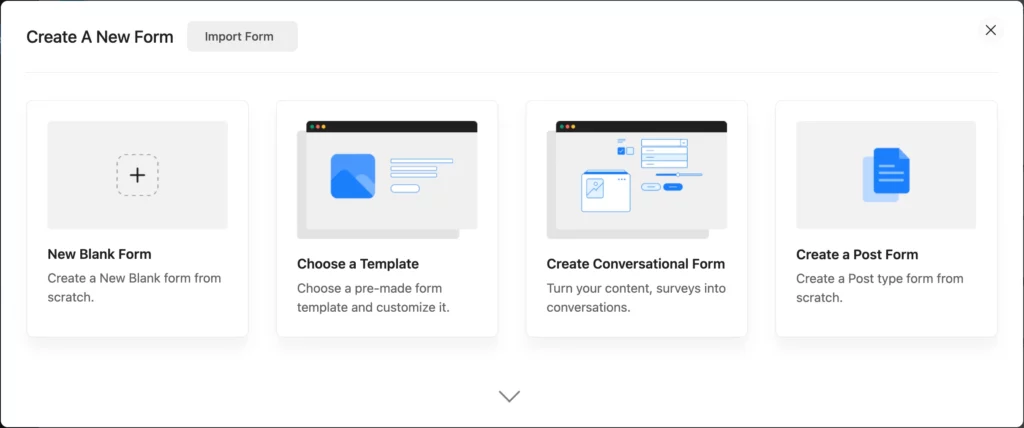
Step 2
Add only the necessary questions in your form. You can search for the fields or drag and drop them from the input fields. Save your form.
Mark all the necessary fields as required (addition of an asterisk), so the form submission fails if those fields are empty.
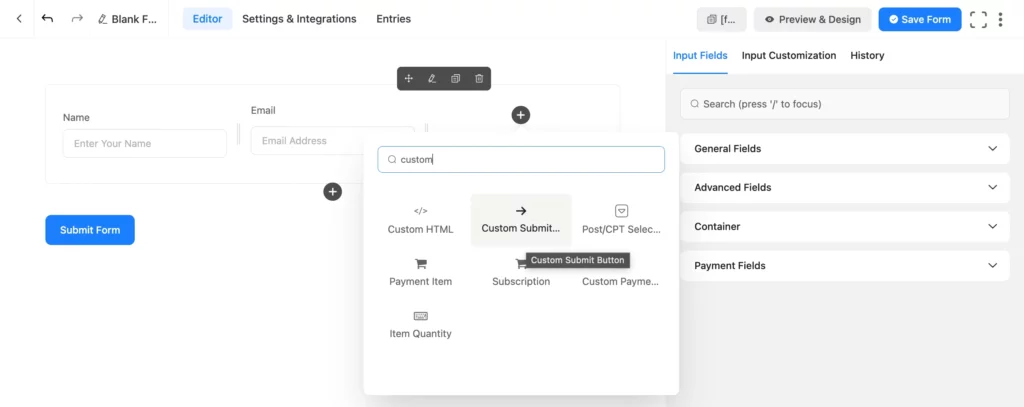
Step 3
Style your form to match your brand theme easily from preview and design. Click Save Settings.
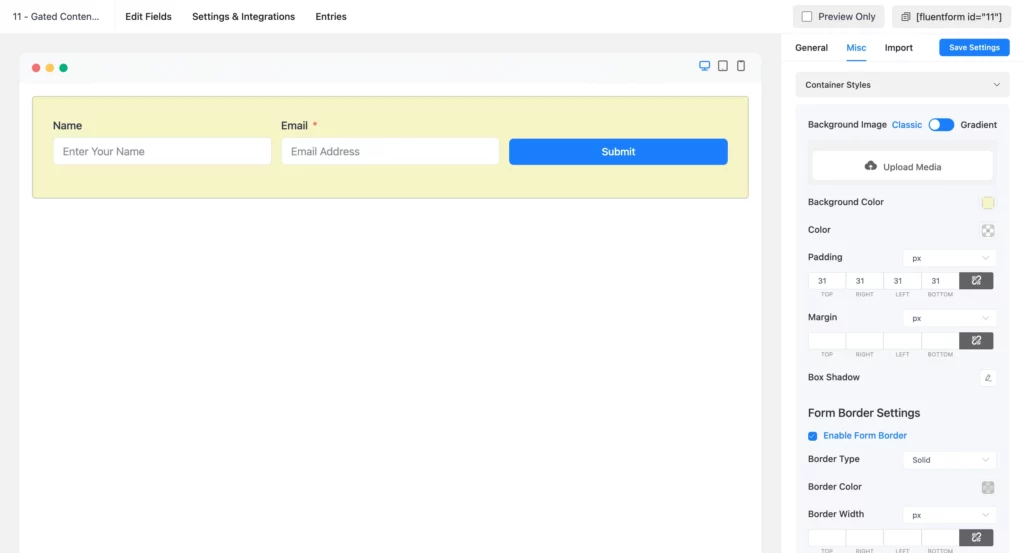
Step 4
Go to confirmation settings from Settings & Integrations. Select the confirmation type and write the message to show.
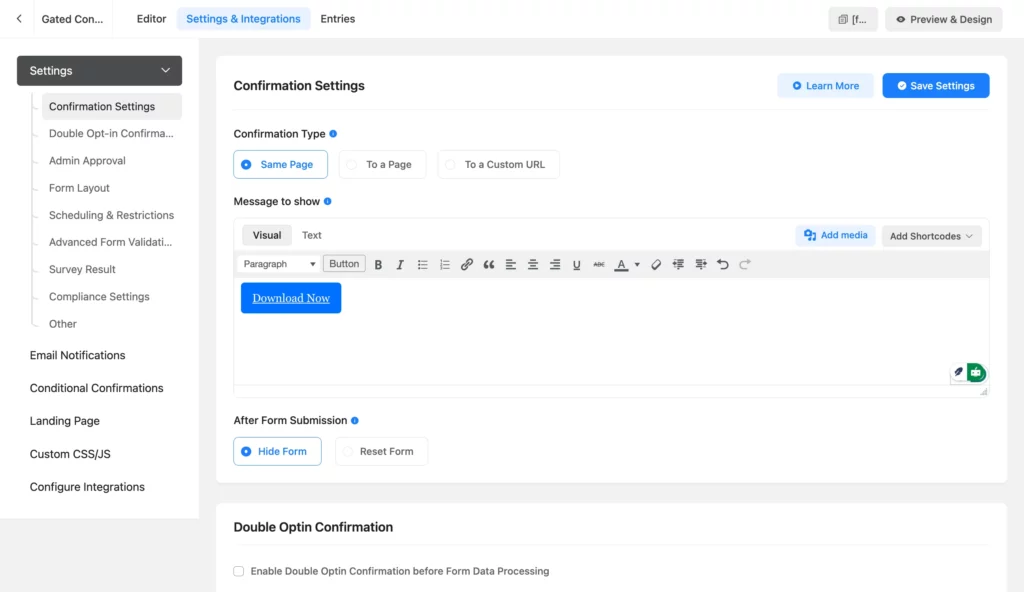
Click Add media to upload your content. If you want a CTA button, copy the link to the media after upload. Click the button icon to add a button. Customize button text and style. Paste the link in the Button URL. Delete the former link and save settings.
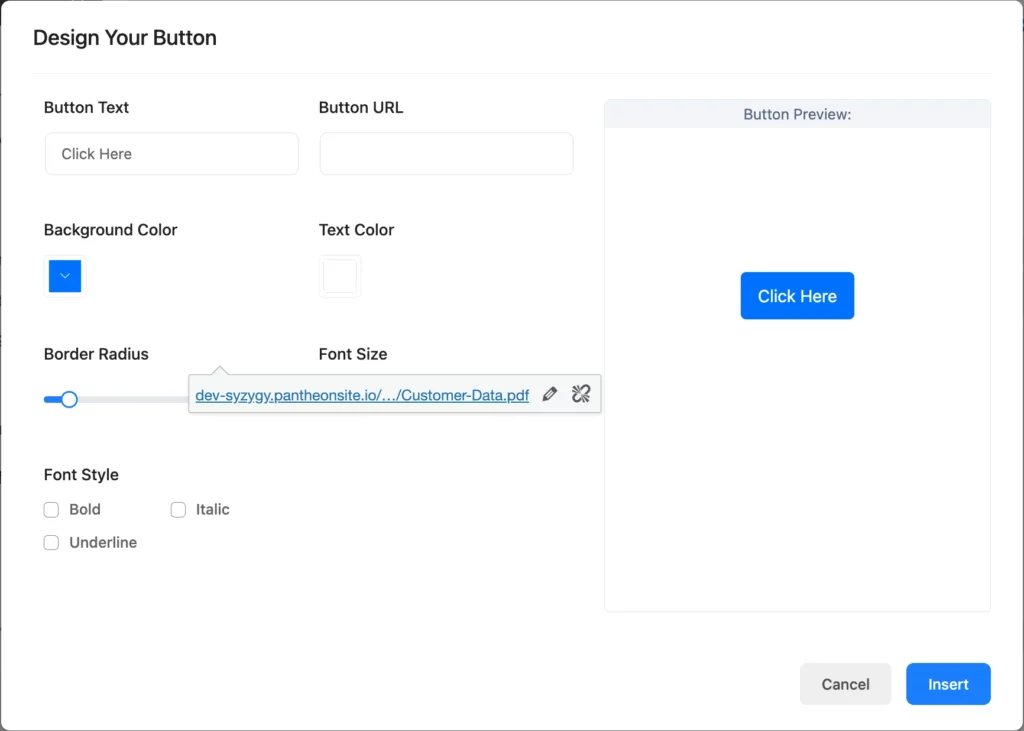
Copy the shortcode of this form and paste it on your landing page, or select from your saved forms using a Fluent Forms block, and you’re done. Once users submit the form, the resource will be automatically sent to them.
The form we just created is given here as an example. If you submit the form, you’ll receive a small PDF on different types of customer data you can capture through a lead generation form.
If you want an optimized email list, you should also enable double opt-in to verify the email addresses. It will keep your email list clean and save storage. You can also send the content via email.
5 gated content best practices to generate more leads
Learn the dos and don’ts of creating the best-performing gated content for maximized lead generation and ROI.
1. Valuable content for each stage
Map a strategy where you offer gated content at each stage of the buyer’s journey. This way you can capture leads at each stage of the lead-generation funnel.
Provide clear value through your content that they won’t find elsewhere. Create exclusive tutorials, infographics, templates, etc., and include them in the gated content.
2. Know your objective
Find out what you aim to achieve via each gated content. If it’s content for the awareness stage, you can ask them to follow you on social media, join a community, etc. This way they’ll learn more about you via your community posts.
Collect emails from the warmer leads to nurture them with more precision, offer tailored solutions, send follow-up information based on which content they accessed, etc.
3. Don’t ask for too much information
Information on your leads is gold. However, if you ask too many questions, it’ll annoy them and they won’t access your valuable content at all. That’s why you need to be very calculative regarding which questions to include in your lead generation form.
Say you’re a B2B company, and you need data on the lead’s location, industry, company name and size, revenue, etc. In reality, you can’t ask them this many questions. The wise thing would be to only ask for company email and research the rest on your own.
If you’re a B2C company, maybe ask for a name and an official work/student email. This way you’ll know where they live, and work, and be able to estimate their age and income. However, if you don’t need all this information, simply go for an email address.
However, if you’re a renowned industry leader who manages a very large business, your team won’t have enough time to personally research and categorize all the leads.
In that case, you can add 2/3 additional questions like company size and industry, etc. so the leads are auto-segmented. Your team can work on the segments to send even more personalized emails.
4. A/B testing landing page and CTA
Create beautiful landing pages to match your brand. Make sure to add striking visuals that your audience can relate to. Add compelling copy and use actionable CTA strategically to guide leads. Leave enough white space.
Conduct A/B testing with the copy, form placement, button text and color, theme, etc. Create multiple versions and ask your team’s advice on what they think would work better.
5. Planned promotion
Since gated content isn’t as easily discoverable, you have to personally make sure that they find visibility. Promote them in email newsletters and social media extensively via different community groups.
Share excerpts and sneak peeks to indicate what your audience is missing out on.
Use compelling and relatable captions and creative images when promoting them on different platforms. Make sure to draw attention and try to get people talking about them. Answer all queries that come up in the comments section.
One thing you must take care of with all the strategies is ensuring the security of your gated content so they can’t be accessed without following through with the requirements.
Moreover, add security measures like GDPR compliance so visitors are comfortable sharing their information. Let them know you won’t spam them, and they have the option to unsubscribe any time they want.
Now that you learned how to make gated content work, let’s explore the types so you know which ones fit best for your niche and what your team will be more comfortable preparing.
5 examples of great gated content
Remember when we talked about creating different types of gated content? Well, here are some examples that you can use for different stages of a customer’s journey and in different formats.
1. Free Trials
Collect leads in exchange for a free trial/sample of your product/service. The leads you collect in exchange for a free trial are hot leads at the bottom of the lead funnel because they’re already trying out your product and need to make a purchase decision. Help them make that decision easily.
If you own a freemium product, collect leads in exchange for the free version. Then send personalized emails describing how the product could help them better at its full potential. Finally, share good reviews, incentivize with a discount deal, etc.
2. Ebooks and White Papers
Ebooks and white papers are a good option to collect leads who are at the consideration stage. Offer in-depth knowledge and industry experts’ opinions via them, so leads can make informed and confident decisions.
Offer knowledge on different levels. Address each issue separately and discuss the possible reasons, outcomes, solutions, etc. in detail.
3. Courses and private forums
Offer basic and advanced courses to attract leads at the awareness stage and also those who are further down the lead generation funnel. The course topics should be something you specialize in. Have experts take the courses for further credibility and value.
Create private discussion forums for those who complete the courses. Engage in those forums actively to build trust.
4. Webinars
If you have a captivating presenter, you should definitely go for webinars. Create excitement around the webinar using sign-ups, follow-up on the schedule, countdown, etc.
Choose a topic that your audience won’t want to miss. Keep them engaged with valuable and entertaining speeches, offering fresh insight and multiple perspectives. Make sure your audience finds them relatable.
Use polls, and Q&A sessions to make the webinars interactive. Offer infographics, templates, etc. as free resources to attendees.
5. Quizzes and contests
Quizzes and contests are usually for leads at the awareness stage. Set up fun quizzes that people in the industry would be interested in, and trade the quiz results for valuable information.
You can also ask visitors to sign up for contests and announce attractive prizes for winners.
No matter which format of gated content you choose, have a platform (like a community or a comments section) where people who accessed the resource can leave reviews or engage. It’d be a powerful way to motivate others to access the information.
Moving forward
Review the strategies in this blog to reflect on when’s the right time for you to start offering gated content. Establish your authority first through ungated content, then slowly start uploading one gated content at a time. Analyze how they are performing.
Based on performance, decide on a series/sequel, or a gated content of a different format. Focus on covering each stage of the buyer’s journey by offering gated content in multiple formats for the awareness, consideration, and decision stages.
Make sure the value you offer through gated content can’t be found elsewhere. Utilize user reviews to promote your gated content. Segment the leads generated through gated content based on their content preference, and nurture them with targeted emails.
Remember, your goal is to generate and convert leads. Use different metrics to measure the success of your campaigns, and optimize your approach consistently for better results.
If you have any insights or strategies, share them in the comments!

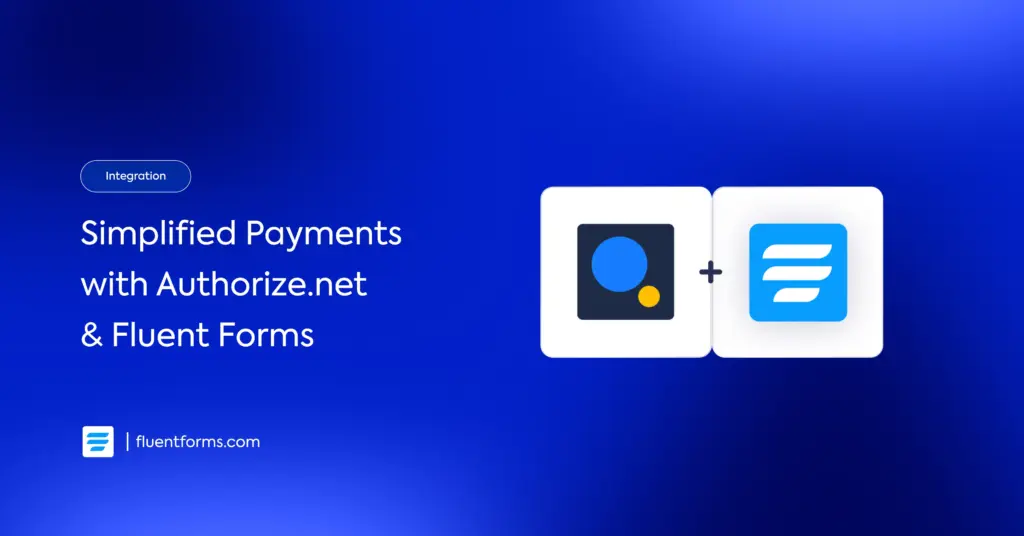
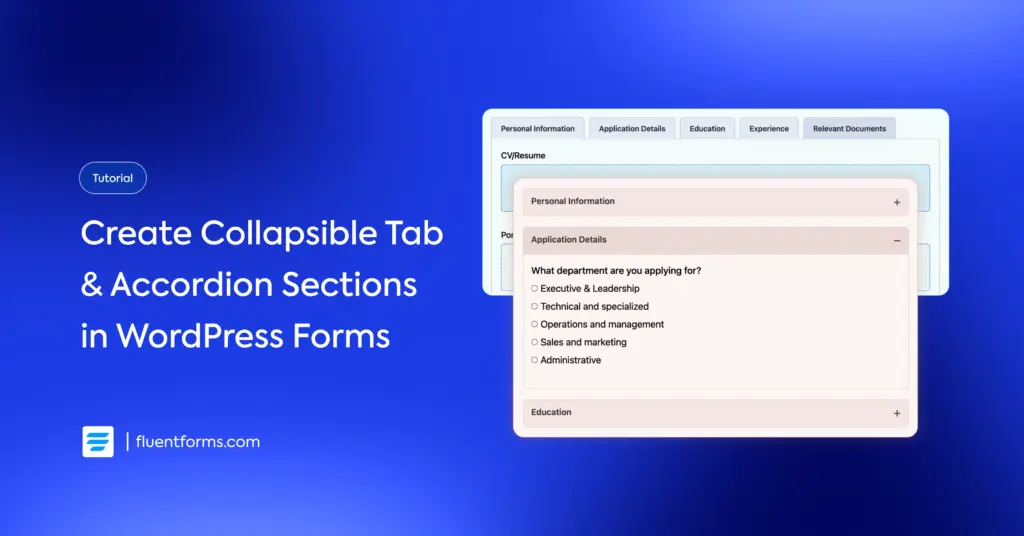




Leave a Reply